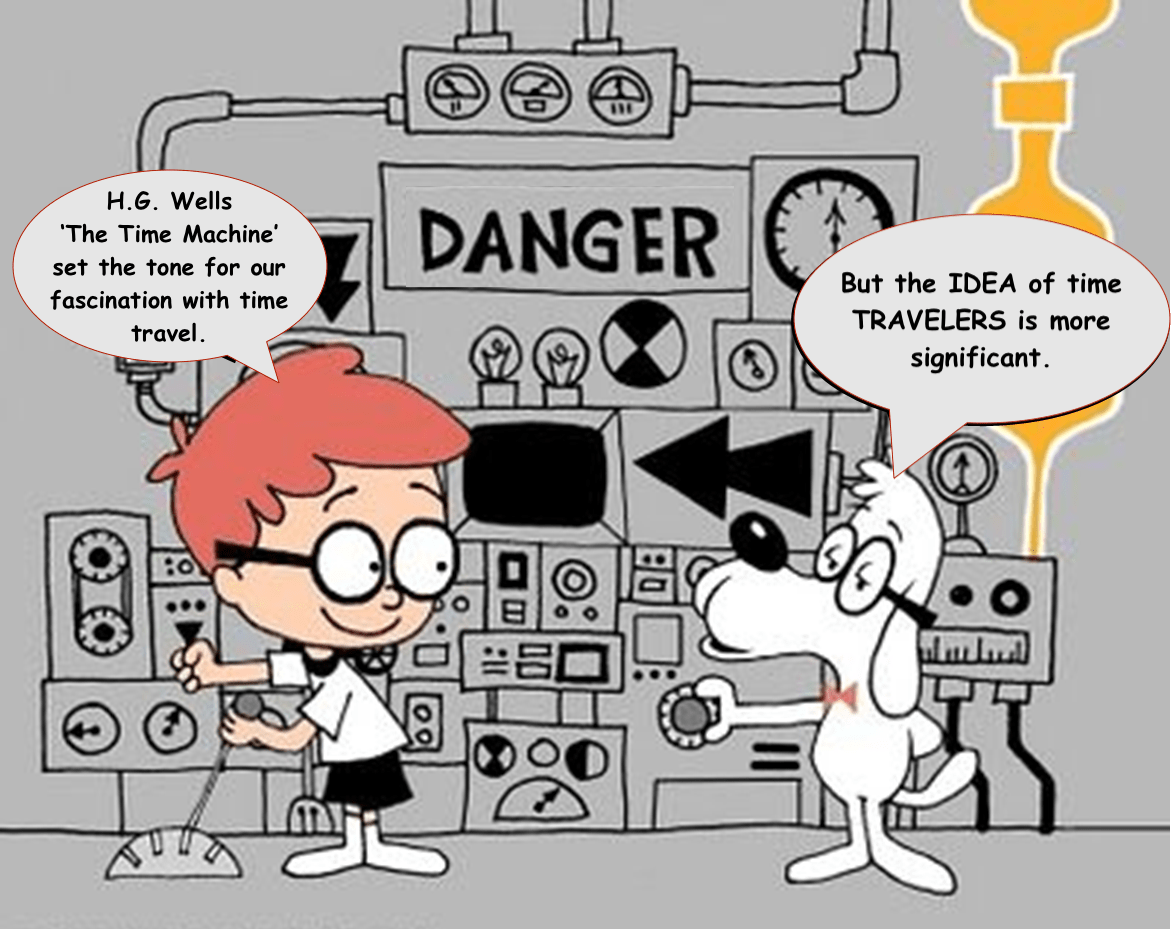Time Travel, the Pogo Stick of Philosophy [Part 1]
In 1895, H.G. Wells’ The Time Machine captured the popular imagination and set the tone for our infinite fascination with time travel. Its attendant gadgetry kept the nerdier fans busy, while others were distracted by the possible and impossible science of it.
But the idea of time travelers is more significant. The time traveler, like a cosmic pogo sticker, bounces in and out of moments, performs from a place of detachment, yet also influence. Uprooted from the present, the personality of time travelers may seem cavalier, not responsible or bound to the consequences of their actions. But the Pogo Stick Thesis is that time travelers, in their ability to witness, digest, and consider the failings of the past and the promise of the future, can shed light on a more playful, hopeful, and less timebound society.
The well-worn but amusing tropes of time travel appear frequently. Among the oodles areMr. Peabody’s Improbable History (The Wayback Machine), Woman on the Edge of Time (Marge Piercy’s feminist take), Pan’s Labyrinth, The Twilight Zone, 12 Monkeys, Back to the Future, A Wrinkle in Time, Slaughterhouse Five, A Connecticut Yankee in King Arthur’s Court, andDr. Who, to name just a few.
J.K. Rowling suitably restates it in her Harry Potter novel,The Prisoner of Azkaban. In Alfonso Cuarón’s film version, Harry and Hermione make daring rescues, then show up back at Hogwarts. Potter allays suspicions, with tongue in cheek, “Honestly, Ron, how can somebody be in two places at once?”
And Jimi Hendrix sings “…I’m a million miles away, and at the same time I’m right here in your picture frame.” Lighthearted spins on a person multiplying themselves by time-traveling into their own past. Time travel is fun!Might it foment a particular attitude, or converge on a particular personality type?
Time travel is an attribute of the rule-breaking Trickster archetype, which has been with us since at least the time of Jacob. The Trickster takes many forms, but is defined by playfulness, and C.G. Jung describes tricksters as typically having these qualities: ‘…a fondness for sly jokes and malicious pranks…powers as a shape-shifter…[a] dual nature, half animal, half divine…exposure to all kinds of tortures, and—last but not least…approximation to the figure of a saviour….In his clearest manifestations, he is a faithful copy of an absolutely undifferentiated human consciousness.’Two examples are particularly instructive and demonstrate the lighthearted approach of the trickster that substitutes fun for power. […to be continued in this space/time]

Haven’t seen the movie “Poor Things?” Want its surprises? Then GO SEE IT before you read this… and in the meantime, click the image below v v v A LITTLE PLUG FOR YOU BOOK CLUBBERS [CLICK!] In their 2018 period comedy The Favourite, Arizonan Emma Stone and Athenian Yorgos Lanthimos gave us clues of mischief...
HEY PLAYSTERS! Apropos of nothing, I want to share with you an excerpt from Disruptive Play: The Trickster in Politics and Culture. Well, not quite nothing. For the most direct route to Trickster essence is through its Great American Icon, Bugs Bunny. When I wrote Disruptive Play, not so long ago, I was certain that...
This year, we observe the Rev. Martin Luther King, Jr.’s birthday on January 15th. May that transcendent leader for civil rights, a just society, and spiritual growth continue to inspire. But EVERY year, January 17th is International Trickster Day (I hereby declare). No fewer than six of history’s great tricksters were born on this day,...